The Nashorn Tank Destroyer
This German Nashorn self propelled gun was used as a tank destroyer. It can be found at the U.S. Army Center for Military History Storage Facility, Anniston, AL, USA
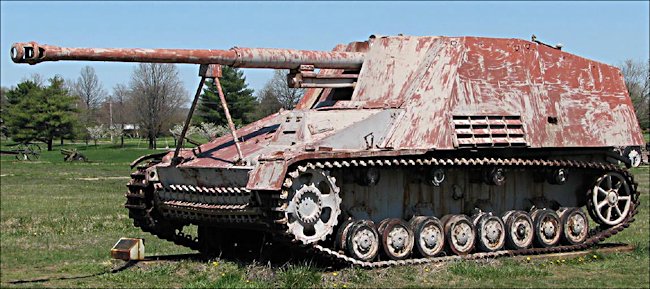
German Nashorn self propelled anti tank gun of WW2 at the U.S. Army Center for Military History Storage Facility, Anniston, AL, USA
The largest, heaviest and most powerful anti-tank gun to see regular service in the German army was the 88mm PaK 43. It realised its maximum velocity of 1,103m/sec when firing tungsten shot and could penetrate a T34 tank's frontal armour at a distance of 3,500 metres.
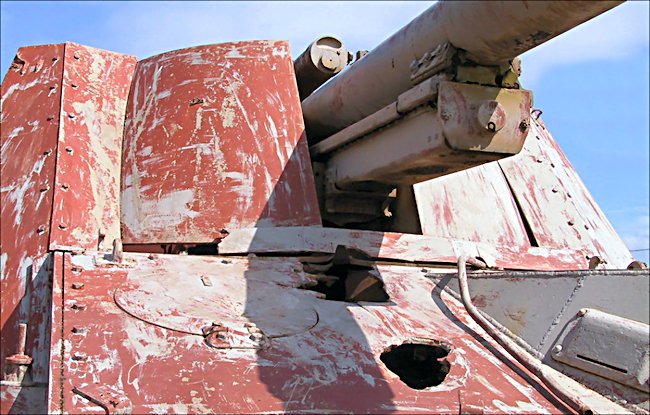
This 88mm tank killing gun was was mounted on the specially designed Geschützwagen III/IV tank chassis. It took elements of both the Panzer III (driving and steering system) and Panzer IV tank chassis (suspension and engine). The engine had been repositioned to the centre of the vehicle to make room for the gun and crew compartment. It shared this special chassis with the 150mm artillery self propelled gun called the Hummel.
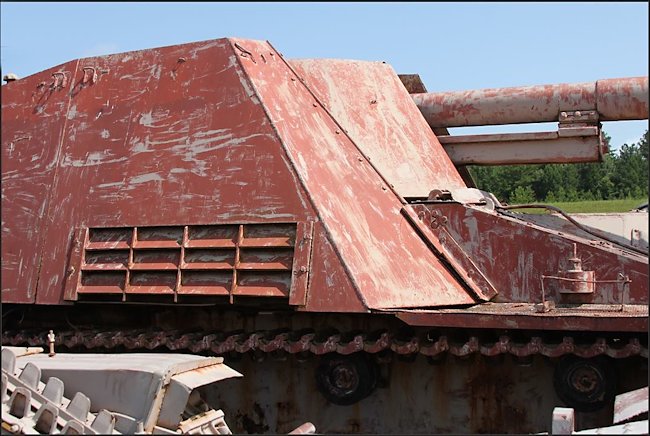
It was called the Nashorn (Rhino). It shared the same armoured superstructure crew gun shield. It first saw active service in operation citadel in 1943. Whilst similar in design to earlier Panzerjäger vehicles the Nashorn was purpose-built around the 88mm PaK 43 gun.
Unlike its smaller cousins the Nashorn was not deployed in Panzerjäger battalions, but rather kept in smaller detachments at Corps level and sent out as needed. Most of the 494 that were built served mainly in Russia but some were encountered in Italy.
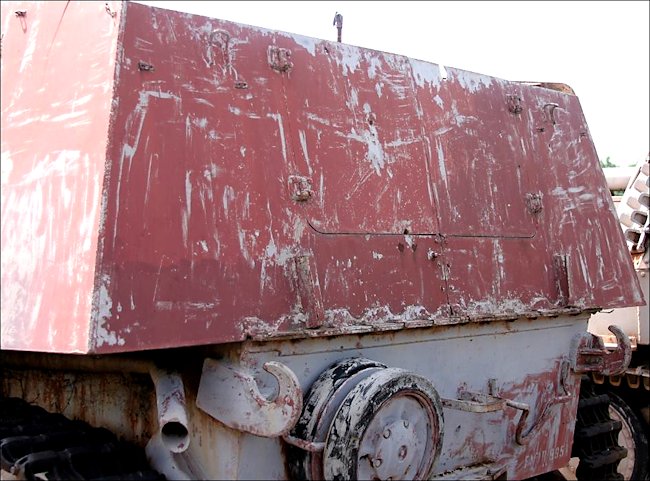
You can see a Panzerjäger Hornisse (Tank Hunter Hornet) self propelled gun at the Kubinka Tank Museum in Russia. It was the first version of the Nashorn. The next version had some minor alterations but Hitler renamed the vehicle Panzerjäger Nashorn because it sounded more 'butch'. The large silhouette of the Nashorn made it easy to be seen and targeted by enemy tanks and artillery units. Around 500 were issued between 1943 and 1944. The main use of the Nashorn was to pick off Russian tanks at long ranges and then move to avoid return fire. Crews realised that getting too close to the enemy had fatal consequences. The Nashorn was phased out with the introduction of the Jagdpanzer IV.
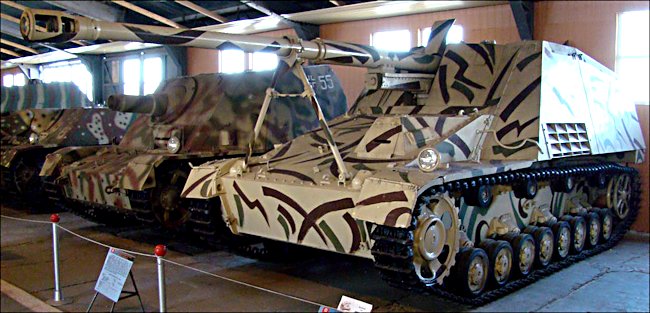
Panzerjäger Hornisse (Tank Hunter Hornet) self propelled gun at the Kubinka Tank Museum in Russia
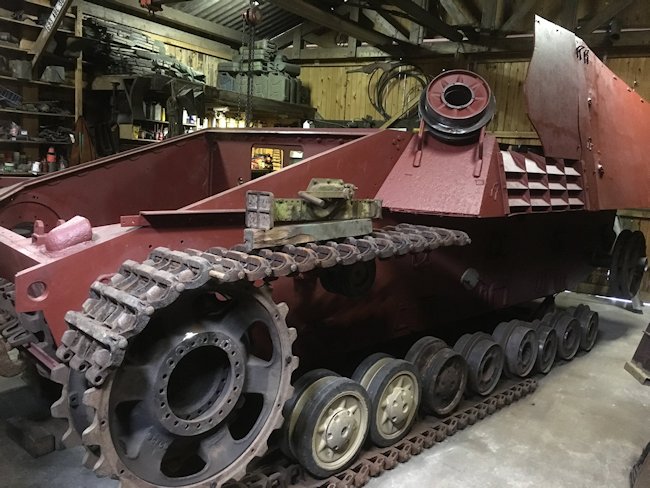
A Panzerjäger Nashorn 8.8cm self propelled gun is currently being restored. Its chassis number is 310063. Do you know its history. If yes please e-mail me.
WW2 tank books

